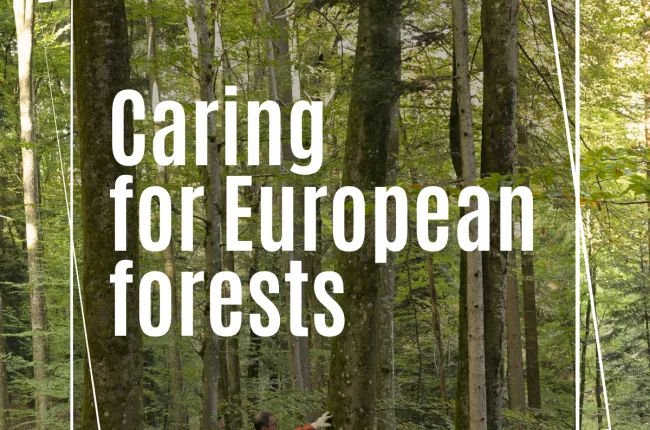The Confederation of European Forest Owners (CEPF) welcomes the opportunity to express first views on the European Commission’s initiative to develop EU rules on certifying carbon removals.
European forest owners offer key solutions for EU´s ambitious climate work in many essential ways: sustainably managed forests sequestrate carbon (sink), store carbon in forests and wood products (storage), and replace fossil-based and other carbon intensive materials and energy with woody biomass (substitution).
CEPF notes that the target audience of the carbon certification initiative foresees ”foresters and industrial companies operating the capture and storage of carbon”. Since sustainable forest management (SFM) contributes to the climate change mitigation and adaptation, forest owners should be encouraged to manage their forests to keep their forests healthy and resilient. Nevertheless, ensuring a strong action to reduce fossil emissions via substitution should be equally important as incentivising to increase carbon removals in forests.
The Commission´s roadmap on the sustainable carbon cycles refers that carbon farming is key to support especially reforestation, afforestation and forest restoration activities. To build transparent rules to monitor, report and verify carbon removals, the EU should consider different forests and sustainable forest management practices around the EU. To reach the EU climate-neutrality and biodiversity objectives, not only a few activities should be accounted towards the target of carbon farming, but all relevant sustainable forest management practices should be well incentivised and rewarded. CEPF emphasises, that the carbon removal certification initiative should not result in postponing important management practices which are needed for ensuring forests´ multiple benefits.
According to CEPF, important clarifications are needed prior to developing the carbon removal certification in particular regarding the concepts of “nature-based carbon removals” and “enhanced sustainable forest management”. Such concepts must be properly defined and commonly understood and agreed among the EU-decision makers and stakeholders. Therefore, CEPF would welcome to be associated more closely when creating the best possible standards and criteria for carbon removals. Additionally, the Commission should focus on making the role of the EU carbon certification scheme clear in the overall climate policy architecture and on enabling the carbon removals' access to markets.
European forest owners stress that the EU carbon removal certification should be based on voluntary, market-based measures. If needed, CEPF highlights that the EU certification framework should define only the minimum standards and criteria for the certification in order to increase the transparency and level playing field of voluntary carbon markets and should not comprehensively define the certificates. This means that there is no need for the EU to establish a new market platform.
Finally, such initiative to encourage carbon removals and storage should not be seen as the only way to support forests' contribution to the EU carbon neutrality objective. This initiative must also give a right signal to bioeconomy and other forest-based objectives, like producing high-quality wood. Keeping this in mind, the initiative should also enable a carbon market for wood products and carbon emission substitution. Ideally, the Commission could ensure that all relevant bio-based product categories are included and develop a methodology to account for the corresponding positive substitution effects.
Lastly, the European forest owners underline that the carbon certification mechanism should not restrict sustainable harvesting levels which play a major role in wood availability, job creation in rural areas and the viability of the European forest sector.




